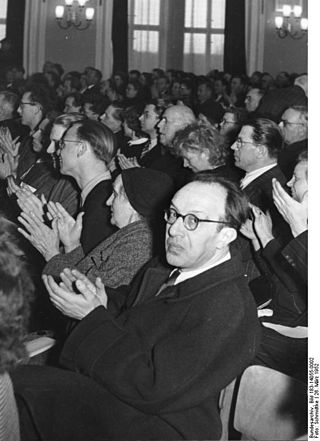
A coffeehouse, coffee shop, or café, is an establishment that serves various types of coffee, espresso, latte, americano and cappuccino. Some coffeehouses may serve cold beverages, such as iced coffee and iced tea, as well as other non-caffeinated beverages. A coffeehouse may also serve food, such as light snacks, sandwiches, muffins, cakes, breads, donuts or pastries. In continental Europe, some cafés also serve alcoholic beverages. Coffeehouses range from owner-operated small businesses to large multinational corporations. Some coffeehouse chains operate on a franchise business model, with numerous branches across various countries around the world.

The Viennese coffee house is a typical institution of Vienna that played an important part in shaping Viennese culture.

Aida is a franchise chain of 34 espresso bar and pastry shops (Café-Konditorei) based in Vienna, Austria, with franchise outlets globally. They are also known to be the largest and most exclusive privately owned confectionery producer and coffee shop brand in Europe with 130 confectioners producing 3 tons of cakes and pastries daily.
Andreas Stöberl, better known by his latinised name Andreas Stiborius (Boius), was a German humanist astronomer, mathematician, and theologian working mainly at the University of Vienna.

Jerzy Franciszek Kulczycki of the Sas coat of arms was a Polish nobleman, diplomat, and spy during the Great Turkish War of Ukrainian origin. For his actions at the 1683 Battle of Vienna, when he managed to get out of the besieged city to seek help, he was considered a hero by the local people. According to legend, he is often cited as starting the first café in the city in 1683, using coffee beans left behind by the retreating Ottoman Turks. However, more recent sources suggest that the first coffeehouse in Vienna was opened by the Armenian Johannes Theodat in 1685.

Herbert Hunger was an Austrian Byzantinist, palaeographer and university professor. He was an influential specialist in Byzantine literature, particularly of the secular vein.

Armenians in Austria refers to ethnic Armenians living in Austria. They number around 6,000 and mainly live in Vienna. There is also the very important presence of the Mekhitarist Order in Vienna that plays a major role in the country as well as worldwide.

Carry Hauser, born Carl Maria Hauser, was an Austrian painter, stage set designer and poet.

Julius Alwin Franz Georg Andreas Ritter von Schlosser was an Austrian art historian and an important member of the Vienna School of Art History. According to Ernst Gombrich, he was "One of the most distinguished personalities of art history".

Ernst Hilmar was an Austrian librarian, editor, and musicologist.
The Karl Renner Prize, established on the occasion of the Austrian Federal President Karl Renner’s 80th birthday by the city of Vienna, is awarded to individuals or groups in recognition of merits for Vienna and Austria in cultural, social as well as economic concerns, acknowledged on a national or international level. Endowed with 43,600 euro, the prize is currently given to a maximum of six nominees every three years.
Hans Tietze was an Austrian art historian and member of the Vienna School of Art History.

Dr. Emil Mayer was an Austrian photographer, lawyer, inventor, and businessperson.

Georg Decker was an Austro-Hungarian portrait artist.
Gösta Neuwirth is an Austrian musicologist, composer and academic teacher. He studied in Vienna and Berlin, where he wrote a dissertation on harmony in Franz Schreker's Der ferne Klang. He has taught at universities and music schools including the Musikhochschule Graz, University of Graz, Hochschule der Künste Berlin and University of Freiburg. His compositions include a string quartet and a chamber opera.

Ludwig Karpath was an Austrian musicologist.

Georg Knepler was an Austrian pianist, conductor and musicologist.
The Wiener Kaffeesiederball (Viennese Coffeehouse Owners Ball), also shortened: Kaffeesiederball is one of the extravagant traditional balls of the Viennese ball season.

The Reformed City Church of Vienna is a church building of the Evangelical Church of the Helvetic Confession in Austria. It is located within the 1st municipal district of Vienna, Innere Stadt, on Dorotheergasse.














